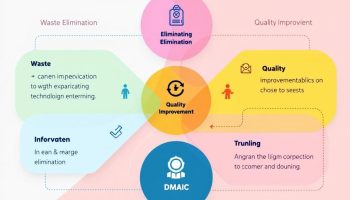
Portfolio Optimization with the Sharpe Ratio
Portfolio optimization with the Sharpe Ratio offers a smart way to evaluate investment performance by measuring risk-adjusted returns. This calculation compares portfolio excess return against volatility. Using the Sharpe Ratio helps you objectively compare different investment options and find efficient asset allocations that balance returns with risk.
Key Takeaways:
- The Sharpe Ratio allows standardized comparison of investment performance by measuring excess return per unit of risk
- A higher Sharpe Ratio indicates better risk-adjusted performance, helping investors make more nuanced investment decisions
- Portfolio optimization using the Sharpe Ratio helps identify and eliminate underperforming assets that add unnecessary volatility
- The metric enables strategic asset allocation by providing insights beyond simple return comparisons
- Professional investors use the Sharpe Ratio as a cornerstone for evaluating and constructing diversified portfolios
The Sharpe Ratio calculation gives you a clear picture of how much additional return you receive for the extra risk taken in your investments. Financial analysts consider this tool essential for creating balanced portfolios. The ratio helps determine if potential returns justify the associated risks.
You’ll find the Sharpe Ratio particularly useful when comparing investments with different risk profiles. Rather than focusing solely on returns, this approach considers how much volatility you must accept to achieve those returns. This leads to better-informed decisions about asset allocation.
Portfolio managers rely on this metric to fine-tune investment strategies. By eliminating assets with poor risk-adjusted returns, you can improve overall portfolio efficiency. The portfolio optimization process becomes more systematic and less influenced by emotional factors.
Modern investment platforms now include Sharpe Ratio analysis in their standard toolkits. This accessibility lets both individual and institutional investors apply sophisticated risk management techniques. You can adjust your investment approach based on your specific risk tolerance and financial goals.
The mathematics behind the ratio may seem complex, but the concept remains straightforward – maximize return while minimizing unnecessary risk. This fundamental principle drives effective portfolio management across different market conditions.
“By harnessing the power of the Sharpe Ratio, investors transform raw returns into meaningful insights, allowing for a nuanced evaluation of risk-adjusted performance across diverse portfolios. This sophisticated metric not only aids in identifying the most effective asset allocations but also empowers investors to fine-tune their strategies by eliminating underperforming assets that contribute to unnecessary volatility.”
Understanding the Sharpe Ratio’s Role in Investment Decision-Making
The Sharpe Ratio serves as your quantitative compass in portfolio optimization, measuring risk-adjusted returns through a straightforward formula: Sharpe Ratio = (Rp – Rf)/σp. This calculation weighs the excess return of your portfolio (above the risk-free rate) against the volatility you’ve accepted to achieve those returns.
Three key components drive this powerful portfolio optimization Sharpe Ratio metric:
- Portfolio return (Rp) – your investment’s actual performance
- Risk-free rate (Rf) – what you could earn without taking risk
- Portfolio volatility (σp) – the standard deviation representing investment risk
You’ll find this ratio particularly valuable when comparing investment portfolios with differing risk profiles. A higher Sharpe Ratio indicates better risk-adjusted performance, helping you identify the most efficient allocation of your assets for the risk level you’re willing to accept.
Practical Applications in Portfolio Construction
When building an investment strategy, the portfolio optimization Sharpe Ratio provides several advantages:
- It creates a standardized metric showing extra return received per unit of risk
- It enables objective comparison between diverse investment options
- It helps identify underperforming assets that add unnecessary volatility
- It guides strategic planning for optimal risk-return balance
- It supports performance evaluation across different market conditions
Many professional investors use the Sharpe Ratio as a cornerstone for portfolio management decisions, particularly when building diversified portfolios. The ratio helps pinpoint investments along the efficient frontier – that curve representing portfolios offering maximum expected return for a given level of risk.
Consider this comparison of portfolio performance using the Sharpe Ratio:
| Portfolio | Annual Return | Volatility | Risk-Free Rate | Sharpe Ratio |
|---|---|---|---|---|
| Conservative | 7% | 5% | 2% | 1.0 |
| Balanced | 9% | 8% | 2% | 0.875 |
| Aggressive | 12% | 15% | 2% | 0.67 |
While the aggressive portfolio shows the highest absolute return, the conservative portfolio delivers superior risk-adjusted performance with a portfolio optimization Sharpe Ratio of 1.0. This example demonstrates how the metric helps you make more nuanced investment decisions beyond simply chasing the highest returns.
Expert Insight: Understanding the Sharpe Ratio enhances your investment decision-making by providing a clear measure of risk-adjusted returns, allowing you to evaluate different portfolios effectively. By comparing the excess return of your portfolio against its volatility, you can identify which investments yield the best performance relative to the risk taken. Use the Sharpe Ratio as a critical tool to optimize asset allocation, ensuring that you maximize returns while maintaining a risk level that aligns with your financial goals.
The Maximum Sharpe Ratio Portfolio and Efficient Frontier
The Maximum Sharpe Ratio Portfolio (MSRP) represents the optimal allocation that achieves the highest portfolio optimization sharpe ratio on the efficient frontier. You’ll find this portfolio at the tangency point where a line from the risk-free rate touches the efficient frontier curve. This unique position offers the best risk-adjusted return available to investors seeking balanced performance.
Mathematically, MSRP requires solving a fractional programming problem that William Sharpe formulated in 1966: max[w] (w^T μ – rf)/√(w^T Σ w) subject to w^T 1 = 1, w ≥ 0. This optimization balances your expected returns (μ) against risk measured through the covariance matrix (Σ), while portfolio weights (w) must sum to 100% and remain non-negative for long-only portfolios.
Constructing Portfolios with Portfolio Optimization Sharpe Ratio
When constructing your portfolio using the portfolio optimization sharpe ratio approach, you’ll need to follow several key steps:
- Calculate expected returns for each asset in your investment universe
- Develop a covariance matrix showing relationships between assets
- Determine your risk-free rate from current Treasury yields
- Apply optimization algorithms to find the portfolio weights that maximize the Sharpe ratio
- Validate your results through backtesting and sensitivity analysis
The efficient frontier displays all portfolios that maximize return for a given level of risk. Your portfolio optimization tools will place the MSRP at the most advantageous point on this curve. Modern portfolio theory suggests this allocation provides the best balance between risk and reward.
Finding the maximum Sharpe ratio portfolio requires sophisticated calculation methods. You can implement these through specialized portfolio management tools like Riskfolio-Lib that handle complex matrix operations. These tools apply techniques such as Ledoit-Wolf shrinkage estimators to improve covariance accuracy and reduce estimation errors that plague traditional methods.
The portfolio optimization sharpe ratio approach doesn’t just identify the theoretically optimal portfolio—it helps you understand the trade-offs between risk and return in your investment decisions. By focusing on this ratio rather than raw returns, you’ll avoid taking excessive risks that don’t offer proportional rewards. This balanced perspective is particularly valuable during market volatility when emotional decisions might otherwise lead to poor outcomes.
Investors who embrace the principles of the efficient frontier and the maximum Sharpe ratio can significantly enhance their portfolio’s risk-adjusted returns, making informed decisions that weather market volatility.
hbr.org
Calculation Methods and Implementation Strategies
You’ll need reliable calculation methods to maximize your portfolio optimization sharpe ratio effectively. Mean-Variance Optimization (MVO) stands as the foundation for finding portfolios on the efficient frontier with optimal risk-adjusted returns. This approach requires three key inputs: expected returns of assets, the risk-free rate, and the standard deviation of portfolio returns.
When implementing portfolio optimization strategies, specialized software tools like Riskfolio-Lib provide sophisticated capabilities beyond basic spreadsheet calculations. These tools enable you to construct diversified portfolios using advanced mathematical techniques while implementing strategic planning for your investments.
To enhance estimation reliability, consider these portfolio optimization sharpe ratio techniques:
- Ledoit-Wolf shrinkage methods that reduce noise in sample covariance matrices
- Factor models that capture systematic relationships between assets
- Principal Component Regression (PCR) to refine expected return estimates
- Resampling procedures that account for estimation uncertainty
- Black-Litterman models that incorporate market views with equilibrium returns
Practical Implementation Approaches
The execution of portfolio optimization requires careful consideration of real-world constraints. When building your optimization model, you’ll need to balance the theoretical foundations with practical limitations. The following table summarizes key implementation considerations:
| Implementation Aspect | Practical Approach |
|---|---|
| Rebalancing Frequency | Quarterly adjustments balance transaction costs with optimization benefits |
| Transaction Costs | Include explicit cost penalties in the optimization function |
| Position Constraints | Set minimum/maximum allocation limits to ensure diversification |
| Sector Exposures | Implement bounds on industry concentration to manage risk |
| Estimation Windows | Use 2-5 year rolling windows for parameter estimation |
Sophisticated investors often incorporate risk appetite and tolerance metrics within their portfolio optimization framework. This approach ensures that portfolio optimization sharpe ratio calculations align with your specific investment objectives while maintaining realistic expectations about market behavior.
When implementing portfolio optimization in practice, you should conduct regular backtests using out-of-sample data. This helps validate that your portfolio optimization sharpe ratio model performs consistently across different market conditions and isn’t merely fitting historical patterns without predictive value.

Addressing Estimation Errors with Advanced Techniques
Traditional portfolio optimization with the Sharpe ratio often suffers from estimation errors that can significantly impact your investment outcomes. These errors primarily stem from the uncertainty in estimating expected returns and covariance matrices from limited historical data. You’ll need sophisticated approaches to overcome these challenges and build more resilient portfolios.
Robust Estimation Methods
The Ledoit-Wolf shrinkage estimator helps reduce the impact of estimation errors in your portfolio optimization Sharpe ratio calculations. This technique shrinks the sample covariance matrix toward a structured target matrix, effectively balancing between sample information and prior structure. You can implement this through specialized capacity planning techniques that account for estimation uncertainty.
Resampling methods offer another powerful approach to addressing estimation errors. Bootstrap simulation generates multiple datasets by resampling from historical returns, allowing you to create confidence intervals around your portfolio optimization Sharpe ratio estimates. This provides a more realistic view of potential outcomes compared to single-point estimates. Combining this with risk appetite assessment gives you a comprehensive framework for decision-making.
Bayesian approaches incorporate prior beliefs about asset returns and risks, helping you mitigate extreme portfolio allocations that result from estimation errors. These methods adjust portfolio optimization Sharpe ratio calculations by blending historical data with theoretical expectations. Consider these advanced estimation techniques when constructing your portfolios:
- James-Stein shrinkage estimators for more stable return forecasts
- Black-Litterman model that combines market equilibrium with investor views
- Hierarchical risk parity methods that cluster assets by similarity
- Regime-switching models that adapt to changing market conditions
- Factor-based approaches that decompose returns into systematic factors
Employing these techniques will help you develop more robust portfolio optimization Sharpe ratio estimates, leading to better investment decisions even with imperfect information. Incorporating these methods into your strategic planning process can significantly enhance long-term investment results.
Expert Insight: To effectively address estimation errors in portfolio optimization, leverage advanced techniques like the Ledoit-Wolf shrinkage estimator to refine covariance matrix estimates. Enhance your analysis through resampling methods, such as bootstrap simulations, which generate confidence intervals for the Sharpe ratio, providing a more robust assessment of potential outcomes. Finally, consider Bayesian approaches to seamlessly integrate historical data with investor beliefs, creating a balanced framework for better-informed investment decisions.






